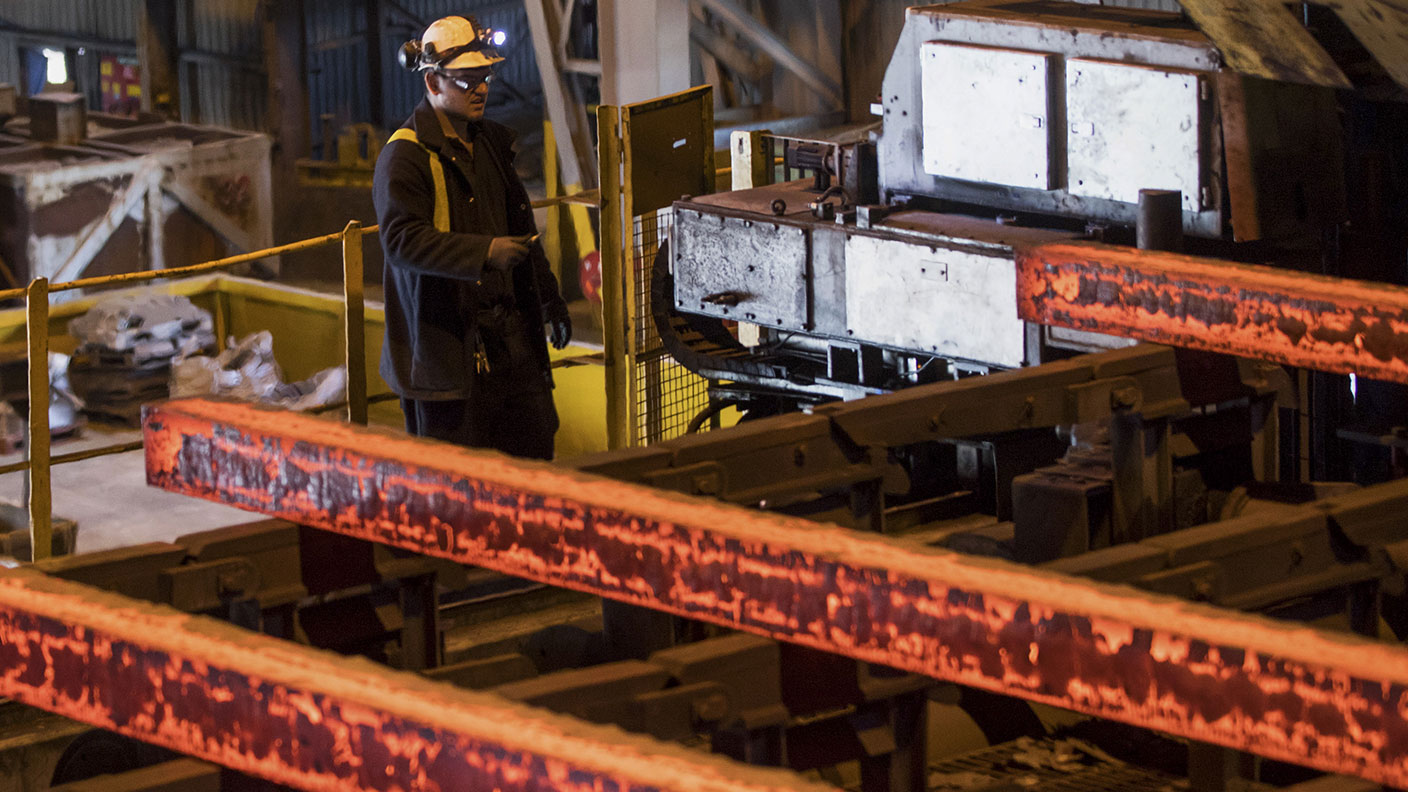There’s more to soaring commodity prices than the post-Covid rebound
Commodity prices are bouncing back in anticipation of a post-Covid surge in demand. Add existing supply shortages and the threat of inflation, and the future looks bright for raw materials, says John Stepek.


The idea of a new commodities supercycle is coming dangerously close to being a consensus viewpoint. Investment bank JP Morgan is the latest to join the fray, following hot on the heels of Goldman Sachs (among others).
And yet, it’s hard to argue with the rationale. Indeed, we’ve been talking about it here at MoneyWeek for a while now. So what’s the story? And how can you profit from it?
Raw materials prices are bouncing back for obvious reasons
The oil price has been on a tear this week, with Brent crude poking its head back above $60 a barrel. But it’s far from the only commodity that’s showing signs of recovery.
MoneyWeek
Subscribe to MoneyWeek today and get your first six magazine issues absolutely FREE

Sign up to Money Morning
Don't miss the latest investment and personal finances news, market analysis, plus money-saving tips with our free twice-daily newsletter
Don't miss the latest investment and personal finances news, market analysis, plus money-saving tips with our free twice-daily newsletter
Platinum hit a six-year high yesterday. After years of being in the doldrums following the “diesel isn’t as green as the government and a certain German car maker told you” scandal in 2015, the metal is finally playing catch-up with the gold price. It still has quite a way to go before it gets back to its more typical position of being worth more than gold, but it’s starting to look as though it might get there.
Again, platinum is not alone. Copper was rallying yesterday too and has enjoyed one of the most aggressive uptrends since bottoming out during the worst of the initial coronavirus outbreak. Agricultural commodities are soaring too (which is bad news for food prices and social stability, but we’ll discuss that another day).
There are obvious reasons for raw materials prices to be bouncing back – we just shut the global economy down for the best part of a year; demand collapsed and so did prices. Now, there’s light at the end of the tunnel (although listening to government announcements, you might not think it), so it makes sense that prices would rebound – we’re going to be using the stuff again.
Of course, that’s helped by the fact that China started to reopen earlier and it’s been reflating its own economy by doing what it typically does – ramping up investment and building.
However, it’s not just about the battering from the pandemic. You have to remember that prior to the pandemic, the commodities sector had suffered a long bear market. That began in May 2011 – I think it’s fair to describe that as the peak of the previous "supercycle". (Others say it peaked in 2008 but if you look at the post-2008 recovery, I think you can consider that an interruption – 2011 is when it really hit the wall).
How commodity cycles work
The thing with commodities is that supply and demand tend to lag each other more than you’d see in lots of other industries. Long story short, it takes ages to build a mine. If metal prices go up, miners might want to take advantage, but it’ll take a while to turn that hole in the ground into something that’s producing a saleable product in the form of actual metals. So what happens is that prices keep going up because demand outstrips supply.
Of course, as prices go up, more and more miners want a piece of the action; they dig more and more holes. Eventually, those holes turn into mines, and because so many of them were dug, you end up with oversupply – particularly if the economic cycle happens to turn at the same time and demand drops.
Prices dive. Miners stop digging holes. They might even fill some of the existing ones in. Eventually, supply falls behind demand again, and prices tick higher, and the whole cycle starts over again. That’s roughly where we are now. 2011 marked the peak; somewhere after that – probably about 2014 – commodity producers threw in the towel in terms of investing in new production. In 2016, the bear market bottomed out, but recovery was intermittent. There was a bit of a comeback and then coronavirus hit.
So we’re at a stage where supply needs to expand to catch up with demand still. And then on top of that, we’ve got all sorts of promises about new infrastructure spending, combined with bottlenecks that have been created by coronavirus choking off key parts of the supply chain.
I don’t know if it adds up to another “supercycle” – which is a bit of a meaningless term, really. But if you believe that inflation is going to be an issue in the near future (and we do) then commodities are one of the few asset classes that can handle inflation when it starts to get out of hand.
We’ve looked at ways to play a new commodities boom in MoneyWeek in recent issues (I wrote about it here) and Merryn wrote about it earlier this week – but we’ll have a lot more in future issues. If you’re not already a subscriber, get your first six issues free here.
Get the latest financial news, insights and expert analysis from our award-winning MoneyWeek team, to help you understand what really matters when it comes to your finances.
John Stepek is a senior reporter at Bloomberg News and a former editor of MoneyWeek magazine. He graduated from Strathclyde University with a degree in psychology in 1996 and has always been fascinated by the gap between the way the market works in theory and the way it works in practice, and by how our deep-rooted instincts work against our best interests as investors.
He started out in journalism by writing articles about the specific business challenges facing family firms. In 2003, he took a job on the finance desk of Teletext, where he spent two years covering the markets and breaking financial news.
His work has been published in Families in Business, Shares magazine, Spear's Magazine, The Sunday Times, and The Spectator among others. He has also appeared as an expert commentator on BBC Radio 4's Today programme, BBC Radio Scotland, Newsnight, Daily Politics and Bloomberg. His first book, on contrarian investing, The Sceptical Investor, was released in March 2019. You can follow John on Twitter at @john_stepek.
-
 Why Trustpilot is a stock to watch for e-commerce exposure
Why Trustpilot is a stock to watch for e-commerce exposureTrustpilot has built a defensible position in one of the most critical areas of the internet: the infrastructure of trust, says Jamie Ward
-
 Tetragon Financial: An investment trust with stellar returns
Tetragon Financial: An investment trust with stellar returnsTetragon Financial has performed very well, but it won't appeal to most investors – there are clear reasons for the huge discount, says Rupert Hargreaves
-
 Why Trustpilot is a stock to watch for exposure to the e-commerce market
Why Trustpilot is a stock to watch for exposure to the e-commerce marketTrustpilot has built a defensible position in one of the most critical areas of the internet: the infrastructure of trust, says Jamie Ward
-
 Tetragon Financial: An exotic investment trust producing stellar returns
Tetragon Financial: An exotic investment trust producing stellar returnsTetragon Financial has performed very well, but it won't appeal to most investors – there are clear reasons for the huge discount, says Rupert Hargreaves
-
 How to capitalise on the pessimism around Britain's stock market
How to capitalise on the pessimism around Britain's stock marketOpinion There was little in the Budget to prop up Britain's stock market, but opportunities are hiding in plain sight. Investors should take advantage while they can
-
 London claims victory in the Brexit wars
London claims victory in the Brexit warsOpinion JPMorgan Chase's decision to build a new headquarters in London is a huge vote of confidence and a sign that the City will remain Europe's key financial hub
-
 The consequences of the Autumn Budget – and what it means for the UK economy
The consequences of the Autumn Budget – and what it means for the UK economyOpinion A directionless and floundering government has ducked the hard choices at the Autumn Budget, says Simon Wilson
-
 Reinventing the high street – how to invest in the retailers driving the change
Reinventing the high street – how to invest in the retailers driving the changeThe high street brands that can make shopping and leisure an enjoyable experience will thrive, says Maryam Cockar
-
 8 of the best houses for sale with electric vehicle charging
8 of the best houses for sale with electric vehicle chargingThe best houses for sale with electric vehicle charging – from a converted World War II control tower in Scotland, to a Victorian country house in Cumbria
-
 Big Short investor Michael Burry closes hedge fund Scion Capital
Big Short investor Michael Burry closes hedge fund Scion CapitalProfile Michael Burry rightly bet against the US mortgage market before the 2008 crisis. Now he is worried about the AI boom
